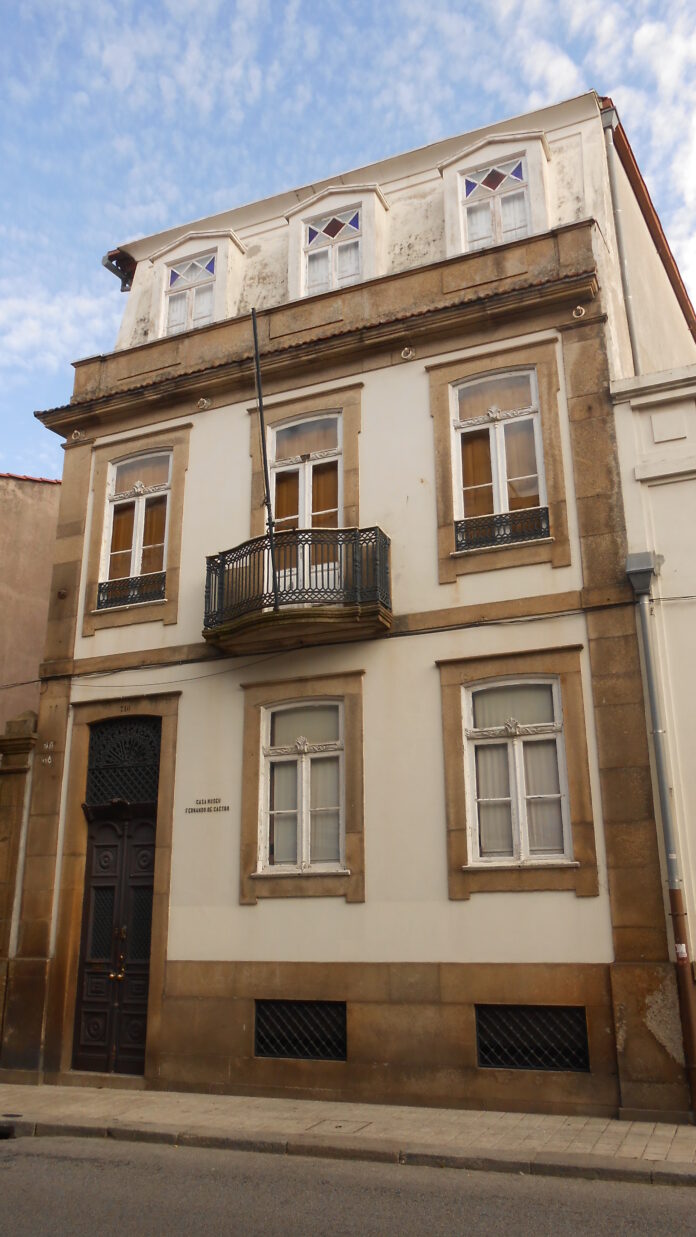The Casa Museu Fernando de Castro in Porto is an extraordinary and eccentric treasure trove, hidden in plain sight along an ordinary looking street. This unique house-museum, once home to the enigmatic collector Fernando de Castro, offers visitors a rare glimpse into a world of eclectic art, ornate interiors, and deeply personal memorabilia. Its revivalist atmosphere, filled with religious art, caricatures, and decorative objects, transports guests back to the late 19th century, making it one of Porto’s most intriguing yet lesser-known cultural gems. A visit to this remarkable space reveals the life and passions of a man who lived art in all its forms.
History
The Casa Museu Fernando de Castro (Fernando de Castro House-Museum) was originally the residence of a family deeply engaged in collecting works of art, particularly in the fields of painting, sculpture, and decorative arts.
Raised in an artistic and entrepreneurial environment, Fernando de Castro’s father, Fernando António de Castro, was a successful businessman specializing in glass, mirrors, and painted papers. The construction of the family’s home on Rua de Costa Cabral began in 1893 and was completed in 1908, a period during which young Fernando was immersed in a world rich with stylistic and artistic influences. Upon his father’s death in 1918, Fernando inherited both the house and the legacy of collecting, which he continued to nurture throughout his life. After his mother’s death in 1925, he expanded the collection, acquiring contemporary works that aligned with his artistic vision. Fernando de Castro’s circle of friends, many of whom shared his appreciation for the arts and letters, also contributed to his extensive collection.
The house and its collection were bequeathed to the state by Maria da Luz de Araújo Castro, fulfilling the posthumous wishes of her brother, Fernando de Castro, to transform the family home into a public museum. This act of donation, officially sanctioned by a decree on December 15, 1951, led to the museum’s classification and its incorporation into the National Soares dos Reis Museum.
Fernando de Castro (born November 26, 1888, in Ses; died October 7, 1946, in Paranhos) was a Portuguese entrepreneur and a collector with a notable interest in literature and the arts. His passion for drawing was reflected in several caricature series he created. In one 1938 cartoon, he depicted himself as a particularly renowned gentleman. This self-portrayal highlighted his standing within Porto’s cultural and commercial elite, giving him access to institutions such as the prestigious Commercial Athenaeus of Porto.
Architecture
The architectural design and interior decoration of the Casa Museu Fernando de Castro are notable for their revivalist aesthetic, strongly influenced by late 19th-century Romanticism. This style is especially evident in the intricate woodwork and sacred art that dominate the museum’s atmosphere, evoking a sense of antiquity that aligns with the period’s reverence for national styles and historical antiquities. It stands as one of the few remaining examples of this romantic architectural environment in Porto.
The house itself was built between 1893 and 1908, with its original decorative elements—such as carved wooden lambris, coffin ceilings, mirrors, wallpapers, and chandeliers—remaining intact. These features reflect a carefully curated interior design, conceived with a sense of grandeur and ostentation, in line with the modern tastes of the time. Fernando António de Castro, the house’s founder, had a deep knowledge of interior decoration, which influenced the home’s design. He hailed from a prestigious background, connected to the Campos Melo family, well-known for their success in the wool trade in Covilhã.
The house underwent significant expansions in 1908, including the addition of a kitchen adjoining the dining room on the first floor and a third-floor extension that added four bedrooms and two living rooms. After Fernando António de Castro’s death in 1918, the estate passed to his children, Maria da Luz and Fernando de Castro, with Fernando eventually becoming the principal custodian of the home.
The museum’s collection is a rich compilation of religious art, Portuguese naturalist paintings, decorative arts, caricatures, and personal books belonging to Fernando de Castro. The rooms in the house-museum are largely preserved in the way they were left by Fernando’s sister, Maria da Luz, maintaining a faithful representation of the family’s taste and style, showcasing the eclectic and cultured life of this prominent Portuguese collector.
Tickets
Tickets for the Casa Museu Fernando de Castro are 5 euros per person.
Do I Need a Reservation for the Casa Museu Fernando de Castro?
Yes. You can only access the Casa Museu Fernando de Castro with a guided tour by online appointment which is subject to availability. For group visits, you can only bring up to 10 people.
Please be advised that the tours are only given in Portuguese and are only available 1-2 days a week through the online appointment form, generally on Thursday mornings at 10:30am. If you are interested in visiting, please check the form at least a month in advance and plan your trip accordingly.
How to Get to the Casa Museu Fernando de Castro
The Casa Museu Fernando de Castro is located at Rua Costa Cabral 716 in Porto.
Bus – Several Porto City bus lines stop near the Casa Museu Fernando de Castro including the 305, 701, 702, and 703
Metro – The Combatentes metro stop on the D-Yellow Line is a 300 m walk from the museum.
Car – Coming from the center of Porto, you should turn right at Praça do Marquês close to the intersection with Rua da Constituição. If you are coming from outside the city, head to the Rotunda da Areosa and then turn left towards Rua de Costa Cabral. There is no separate parking lot for the Casa Museu Fernando de Castro, but there parking spaces available nearby. You can park a bicycle in front of the museum.
Related Tours
- Porto Hop-On Hop-Off Tour with Optional River Cruise and Wine Tasting
Highlights and Hidden Gems of Porto Private City Walking Tour


